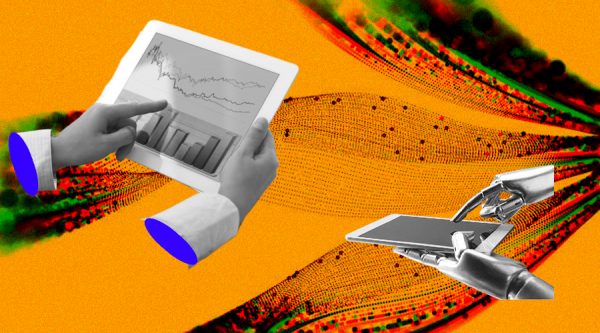By embracing the confluence of AI and BI, businesses can synthesize huge volumes of data into coherent plans of action.
Business intelligence (BI) is a system that collects, saves, accesses, and analyses data to help business users make better decisions. Artificial intelligence, on the other hand, is a means of constructing a computer, a computer-controlled robot, or software that thinks intelligently in the same way that humans do. The study of how people think, learn, decide, and work to solve a problem is the foundation of artificial intelligence, and the findings of this study are used to build intelligent software and systems. The goal of BI is to simplify the process of gathering, reporting, and analysing data. Companies may use BI to increase the quality of their data and the consistency with which they acquire it.
According to Michael F. Gorman, professor of operations management and decision science at the University of Dayton in Ohio, “[Business Intelligence] doesn’t tell you what to do; it tells you what was and what is.” In other words, while BI tools may transform massive amounts of noisy data into a coherent picture, they are not meant to give specific guidelines for how that data should be utilized in decision-making. Companies such as Microsoft, Oracle, and Tableau have created BI solutions for a variety of company tasks such as human resources, sales, and marketing. Businesses may organize data and make historically tough decisions much more quickly by monitoring everything a firm does regularly – and employing data to produce spreadsheets, performance metrics, dashboards, charts, graphs, and other helpful visualizations. In the last three years, the usage of BI systems has increased by roughly 50%.
BI Enterprises use-cases
BI has grown so pervasive and integral to how businesses work that many may be unaware they rely on it. Anyone who has worked with Microsoft Excel or similar spreadsheet tools in a corporate setting has come into contact with BI. Spreadsheets enable organizations to organize, analyze, and visualize data more efficiently than would otherwise be feasible. Many businesses also utilize BI to have a better understanding of their clients. Businesses communicate with their clients using a variety of channels, including emails, chatbots, and social media. BI systems may collect client data from diverse sources and deliver it in a uniform, coherent style. Businesses may obtain a better picture of who their consumers are and how to serve them by gathering and synthesizing data from various touchpoints. Business intelligence is also used by companies to increase operational efficiency. BI technologies may measure important performance indicators in real-time, helping firms to discover and fix problems much more quickly than they could otherwise. Spreadsheets, data visualization tools, data warehousing tools, and reporting software are examples of general BI applications.
Is Artificial Intelligence Necessary in Business Intelligence?
BI and AI are independent yet complementary technologies. The term “intelligence” in AI refers to computer intelligence, whereas the term “intelligence” in BI refers to more intelligent business decision-making that data analysis and visualization may provide. BI can assist businesses in organizing the huge volumes of data they acquire. However, attractive visualizations and dashboards may not always be enough. AI can help BI systems provide clear, actionable insights from the data they study. An AI-powered system can explain the significance of each data point at the granular level and assist human operators in understanding how that data may be translated into real-world business choices. Businesses may synthesize massive amounts of data into coherent plans of action by embracing the convergence of AI and BI.
A wide range of IT organizations, from established behemoths to start-ups, are pursuing this strategy. IBM Research has aimed to “rethink corporate architecture and revolutionize business processes through the integration of AI algorithms, distributed systems, human-computer interface, and software engineering.” CIO Magazine recently featured DataRobot, a firm that provides BI solutions based on predictive modeling and machine learning. DataRobot supported a healthcare organization in adopting AI into its business intelligence tools, according to CIO: “240 physicians and nurses get the predictions and ideas immediately in their PowerBI dashboards, which they can access through tablets and smartphones.” With the help of DataRobot, the healthcare organization was able to identify high-risk patients and design proactive treatment programs.
Business intelligence visualizes data outcomes on a visual dashboard; yet, when data arrives from several sources, dashboards struggle to present the data in an easy-to-read format. However, information may be described at a wider scale using AI, making it easier to draw relevant insights. There is also the issue of skill. In 2019, there is a severe shortage of data analysts. The right processing software can help alleviate some of the issues posed by a skills shortage by performing some of the duties normally outsourced to a data analyst.
Artificial intelligence and business intelligence complement each other perfectly. Artificial Intelligence and Firm Intelligence are demonstrated through AI-powered alerts, which range from basic threshold alerts to complex neural network alerts and assist a business in maintaining complete control of important success elements by alerting them as soon as anything occurs. These AI advancements, when paired with creative business dashboards, will continue to revolutionize the business intelligence sector. All of these companies are moving away from the time-consuming process of searching through data to uncover trends and reacting to costly concerns.
Source: analyticsinsight.net









